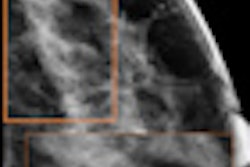Cancer survivors on the lookout for secondary tumors maintained their traditionally high screening rates, but screening compliance by almost everyone else has declined over the past decade, according to a report published online December 27 in Frontiers in Cancer Epidemiology and Prevention.
The National Institutes of Health (NIH)-funded study from the University of Miami also showed that more cancer survivors are returning to the workplace, and it highlighted wide variations between white-collar and blue-collar workers, according to lead author Tainya Clarke, a research associate in the Department of Epidemiology and Public Health.
"There is a great need for increased cancer prevention efforts in the U.S., especially for screening as it is considered one of the most important preventive behaviors and helps decrease the burden of this disease on society in terms of quality of life, the number of lives lost, and insurance costs," Clarke said in a statement accompanying the release of the study. "But despite this, our research has shown that adherence rates for cancer screenings have generally declined with severe implications for the health outlook of our society."
Among 174,393 adult participants of the National Health Interview Survey between 1997 and 2010, the study assessed adherence to cancer screening guidelines based on American Cancer Society (ACS) recommendations. The analysis included 7,528 working cancer survivors and 119,374 adults with no cancer history (Frontiers in Cancer Epidemiology and Prevention, December 27, 2012).
In their analysis of breast, colorectal, prostate, and cervical cancer screening, Clarke and colleagues found that Americans did not meet recommendations for cancer screening for any cancer type except colorectal, for which about 54% of the public were screened. This exceeded the 50% goal of the government's Healthy People 2010 national health promotion and disease prevention initiative.
The increase in colorectal cancer screening among working cancer survivors (white collar, 5.1%; blue collar, 7.9%; service workers, 3.4%) represents about 112,000 additional individuals following recommended guidelines compared to the previous decade, the authors reported. Colorectal cancer screening also grew among individuals with no history of the disease, with increases in screening representing approximately 313,886 additional white-collar workers, 100,923 additional blue-collar workers, and 64,371 additional service workers who reported undergoing colorectal screening exams in 2010 compared to 1999.
Cancer survivors, who are at higher risk of developing the disease, had higher screening rates and underwent the recommended cancer screenings for all types except cervical cancer, which dropped to 78% over the past decade. There were also declines in screening among cancer survivors who sought screenings over the last three years of the survey.
Among breast cancer survivors, mammography rates declined from 78.3% to 74.9% between 2000 and 2003, and again from 77.4% to 74.2% between 2005 and 2008, finally increasing to 75.6% in 2010.
Among individuals with no history of the disease, breast cancer screening declined from 69.4% to about 68% of eligible individuals between 2000 and 2005, followed by a small increase to 68.5% in 2010. This group saw an average 0.6% annual decline in screening among white-collar workers, representing about 53,600 fewer women undergoing mammography in 2010 compared to the 1999 cohort.
The study also showed that among cancer survivors, white-collar workers had higher screening rates than blue-collar workers, which the authors believe reflects disparities in job policies and cancer history relating to cancer survivors in the workplace.
"In general, the more highly educated, white-collar cancer survivor employed in an occupation which provides comprehensive private health insurance is more likely to be among the early adopters of screening practices," the authors wrote. "We found that white-collar workers had significantly higher screening rates of mammography, [clinical breast exams], and pap tests compared to blue-collar workers, but were comparable to service workers. However, since 2005 breast cancer screening among white-collar workers declined while increasing among blue-collar and service workers."
The study team also speculated that ongoing disagreements among the U.S. Preventive Services Task Force, ACS, and others over screening guidelines, as well as the decrease in worker insurance rates over the decade may have influenced the decline in screening rates.



















